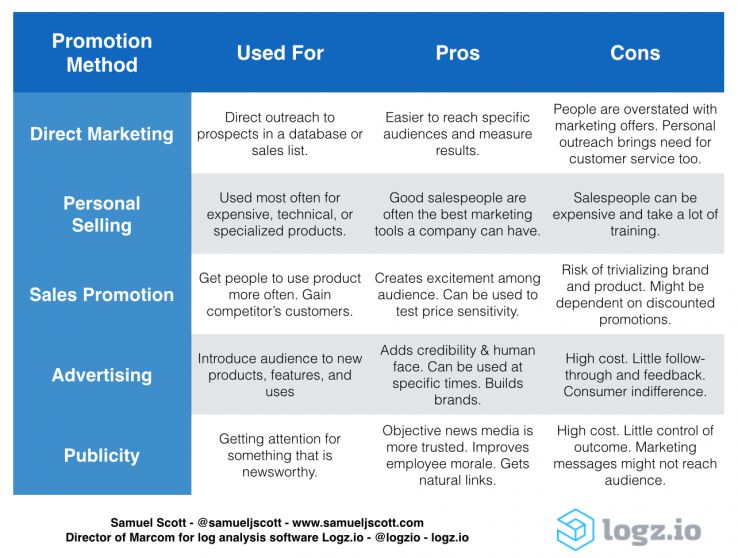
And as I wrote in my prior, much-discussed TechCrunch column that discussed how too many marketers in the tech world do not understand basic marketing terminology and practices, that overall process occurs within the strategic frameworks of the five “buckets” within the Promotion Mix (“promotion” is one of the four Ps in product marketing): direct marketing, advertising, sales promotion, personal selling and publicity.
In this lengthy tutorial on integrating traditional and online marketing on Moz, I described how each of these “buckets” has pros and cons, as well as best practices:

When marketers brainstorm campaigns, they typically ask these questions, in this order:
-
Who is our target audience and what are our goals?
-
What is the best message for that audience?
-
In light of our goals, which strategies within the Promotion Mix — advertising, direct marketing, sales promotion, direct selling and publicity — should we use to communicate that message?
-
What are the best online and/or offline channels for that strategy to reach that audience?
-
What marketing collateral and creatives should we create and transmit based on the answers to the prior four questions?
-
How can we measure the results based on which metrics are relevant to each strategy within the Promotion Mix that we will use?
The strategy, message and marketing collateral matter more than the channel.
Here’s a publicity example. Say that someone uses the various tactics that I describe in my publicity tutorial on Moz to get a New York Times reporter to write about his company. The resulting article will appear in print, on the website and on the Amazon Kindle. The article will be spread on social media and shared in online forums and news aggregators. And so on. This is why there is actually no such thing as “digital PR.” It’s just “PR.” The best publicity practices to get coverage never change, regardless of the channels over which the coverage will appear.
It is strategies, not channels, that have associated best practices and deliver results.
Here’s a direct marketing example. Say that one writes advertising copy to generate direct-response leads. That same copy will often deliver similar results — subject to specific, individual format restrictions of each channel — across platforms, including direct mail, email, Facebook ads and Google AdWords, because human nature does not change.
There is no “digital marketing” and “traditional marketing.” There is only marketing — just ask Campbell’s, which has now consolidated all offline and online work under the CMO.

